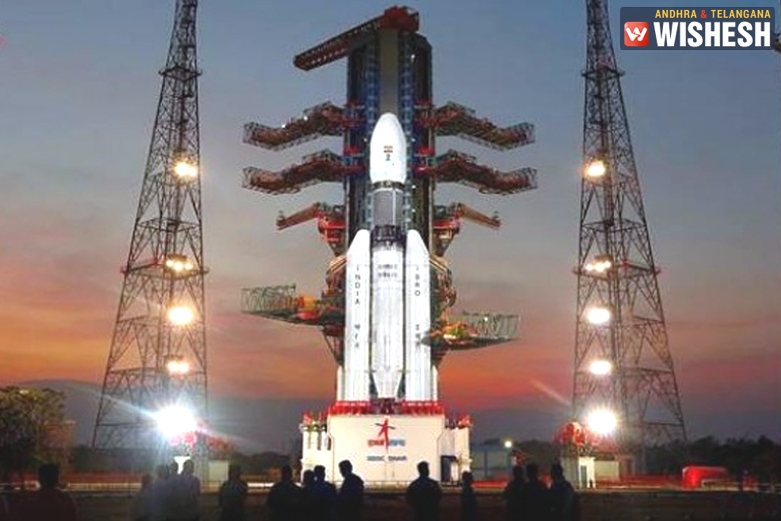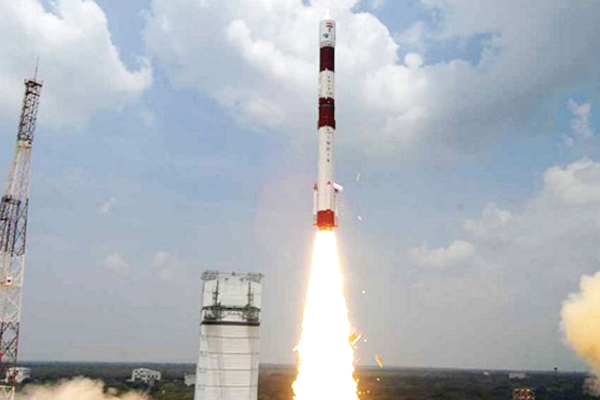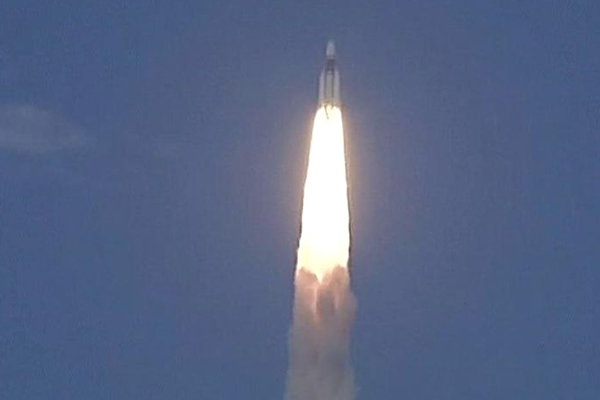India’s New, Heaviest Rocket GSLV-Mk III Lifts From Sriharikota Spaceport
June 05, 2017 19:15
India’s New, Heaviest Rocket GSLV-Mk III Lifts From Sriharikota Spaceport:- The Geosynchronous Satellite Launch Vehicle-Mark III (GSLV-Mk III), India’s new and heaviest rocket blasted off from the Sriharikota spaceport today.
The GSLV-Mk III rocket has the 3,136 kg communication satellite GSAT-19 on board. The rocket on its maiden flight exactly at 5:28 p.m started its ascent towards space from the second launch pad at the Satish Dhawan Space Centre (SDSC).

The 43.43 metre tall, 640 ton rocket, will, just over 16 minutes into its flight, sling the GSAT-19 at its intended orbit at an altitude of 179 km.
A multi-beam satellite, the GSAT-19 carries Ka and Ku band forward and return link transponders and geostationary radiation spectrometer (GRASP), as per the Indian Space Research Organization (ISRO). These in turn monitor and study the nature of charged particles and the influence of space radiation on satellites and their electronic components.

Other features of the satellite include certain advanced spacecraft technologies including miniaturized heat pipe, a fibre optic gyro, micro electro-mechanical systems (MEMS) accelerometer, Ku-band TTC transponder, as well an indigenous lithium-ion battery. The satellite has a life span of about 10 years.
The GSLV-Mk III is a three stage/engine rocket. The first stage of its core is fired with solid fuel and its two motors by liquid fuel. The second is liquid fuel and the third is the cryogenic engine.
Vikram Sarabhai Space Centre Director K. Sivan said “The design carrying capacity of the rocket is four tonnes. The payload will be increased gradually in future flights.”
In 2014, the Indian space agency had flown a similar rocket without the cryogenic engine but with 3.7-tonne payload. This was mainly to test its structural stability and aerodynamics.
Liquid Propulsion Systems Centre Director S. Somanath, said that the inputs of the 2014 mission enabled the ISRO to reduce the rocket load by around 20%. Interestingly, GSLV-Mk III at around 43 metres is slightly shorter than Mk-II version that is around 49 metres tall.
Despite a drastic increase in the weight from around 415 ton of GSLV-Mk II to 640 ton in GSLV-Mk III, the height got reduced, due to the increase in the diameters of various stages, said the ISRO officials.
“The new rocket may be slightly short but has more punch power,” said an ISRO official. The Polar Satellite Launch Vehicle and GSLV-Mk II - with a lift-off mass of 415 tonnes and a carrying capacity of 2.5 tonnes are the two rockets which India has currently.
Prime Minister Narendra Modi after the successful launch of the India’s brand new and heaviest rocket, congratulated the team on Twitter for their efforts and dedication and added that the nation is proud for such an achievement as this.
Mr. Modi tweeted:
Congratulations to the dedicated scientists of ISRO for the successful launch of GSLV – MKIII D1/GSAT-19 mission.
— Narendra Modi (@narendramodi) June 5, 2017
The GSLV – MKIII D1/GSAT-19 mission takes India closer to the next generation launch vehicle and satellite capability. The nation is proud!
— Narendra Modi (@narendramodi) June 5, 2017
SUPRAJA













